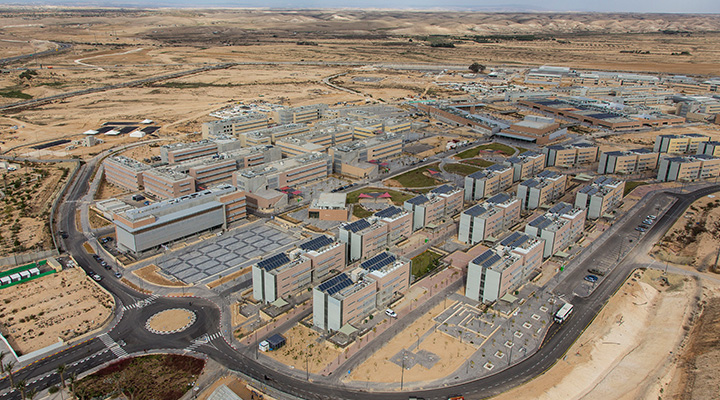Project Description:
A unique building has been constructed at Tel Aviv University’s Porter School of Environmental Studies. The building’s architectural planning was carried out by three firms, after winning an international competition. Our Industrial Projects branch spearheaded the planning and construction of the project’s solar-thermal and air conditioning systems, based on plans by the Assa Aharoni consulting firm.
The client’s brief outlined the need for a zero-carbon structure that would introduce innovative technologies and construction processes, in line with LEED's Platinum rating – the top rating for eco-friendly construction.
The project therefore incorporates many unique technologies, including a solar-thermal system, in which special vacuum tube-type solar panels convert solar energy into hot water. This activates a cooling machine that operates in an absorption cycle (the chemical process replacing electric compressors). Also used was the “cave effect” – installation of cooling piping in the building's floor in order to preserve comfortable thermal conditions, even in the absence of airflow; a natural ventilation system using chimneys and automatic hatches; the use of chilled beams in classrooms; energy-saving treatment for the fresh air that flows into the building, and more.
Planning and construction of the solar-thermal system took the following parameters into account:
- The solar panels were each made from 12 m2 steel frames, which were incorporated into the building's architecture as decorative elements. These frames presented challenges relating to planning, production and assembly.
- All piping in the solar power system was planned and manufactured according to the panel parameters, radiation level, type of liquid, and all the system's safety and maintenance aspects.
- The operating and control system was designed to ensure maximal use of solar energy by taking into account radiation level fluctuations in accordance with the time of day and season. Among other features, when the building is inactive, the cold water produced by solar energy is channeled to the cooling system of the university’s computer rooms, which consume energy continuously.
- Backup systems were designed to address changing climatic conditions and the systems’ maintenance requirements.


